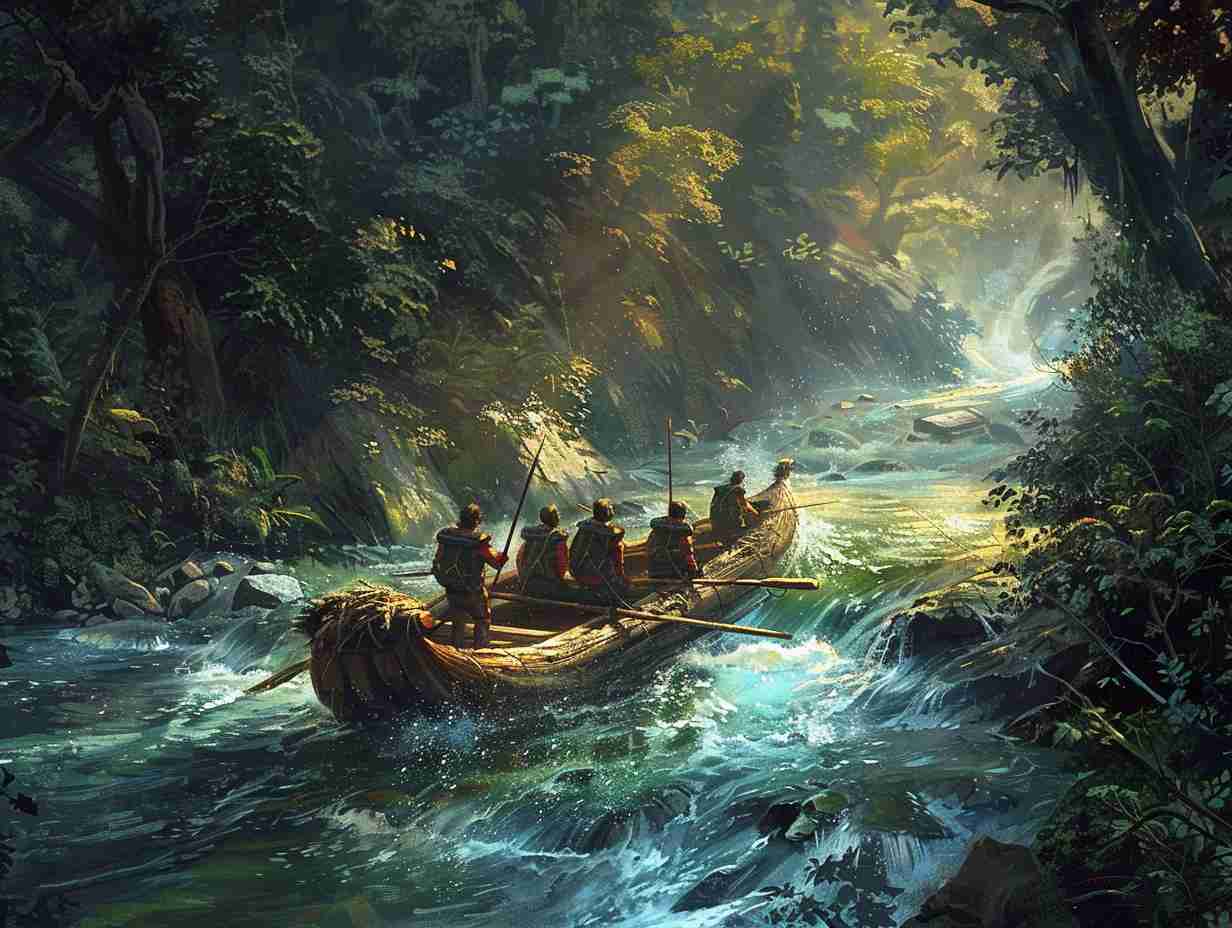
Where Does the Word Rafting Come From

Have you ever wondered where the word ‘rafting’ originated from?
The etymology of this term holds a fascinating tale that spans through various historical, linguistic, and cultural dimensions.
As you begin to explore the intricate roots of this seemingly simple word, you will uncover layers of meaning that shed light on the evolution and significance of ‘rafting’ in different contexts.
Stay tuned as we unravel the mystery behind the origins of this intriguing term.
Key Takeaways
- The term ‘rafting’ originates from Old English ‘raeft’ meaning bound logs for floating.
- ‘Rafting’ evolved from basic transportation to encompass recreational and commercial aspects of water travel.
- Linguistically, ‘rafting’ reflects a history of water-based transportation and trade interactions.
- Rafting holds cultural significance beyond adventure, being part of sacred rituals and historical transportation.
Historical Roots of ‘Rafting
Rafting originated from the necessity to transport goods and people across bodies of water using rudimentary floating devices. In ancient times, civilizations near rivers and lakes would construct simple rafts by tying together logs or bamboo to facilitate travel and trade. These early rafts were essential for carrying heavy loads that couldn’t easily be transported over land.
As societies advanced, so did the techniques and materials used for raft construction. The development of tools allowed for more sophisticated designs, making rafts sturdier and more reliable for long journeys. Rafting soon became not only a means of transportation but also a recreational activity enjoyed by many.
Over time, different regions developed unique styles of rafting based on their specific needs and environmental conditions. Some cultures incorporated animal hides or inflated bladders to increase buoyancy, while others focused on maximizing cargo space. These diverse approaches to rafting highlight its universal appeal and adaptability throughout history.
Linguistic Origins of ‘Rafting
Exploring the linguistic roots of the word ‘rafting’ reveals intriguing connections to ancient languages and cultural practices surrounding water transport.
-
The term ‘rafting’ is believed to have originated from the Old English word ‘raeft,’ which means a collection of logs or timber bound together for floating on water.
-
The concept of rafting can also be traced back to the Proto-Indo-European root word *rebh- meaning ‘to row’ or ‘to moving.‘
-
In ancient civilizations like the Egyptians and Mesopotamians, various forms of rafts were used for transportation and trade along rivers, influencing the development and adoption of the term.
-
As different cultures interacted through trade and exploration, the word ‘rafting’ might’ve evolved and been adapted into various languages, reflecting the universal nature of using rafts for water travel.
These linguistic connections highlight the rich history and global significance of the term ‘rafting’ in describing the practice of moving waterways using simple, yet effective, floating platforms.
Evolution of the Term ‘Rafting

The term ‘rafting’ has undergone a gradual transformation over centuries, reflecting the evolving nature of water transport practices. Initially used to describe the basic act of floating on a simple structure of logs or buoyant materials, ‘rafting’ has expanded to encompass a variety of water-based activities and industries. Below is a table highlighting key stages in the evolution of the term ‘rafting’:
| Time Period | Description | Significance |
|---|---|---|
| Ancient Times | Basic log structures for transportation | Initial concept of floating on water |
| Industrial Era | Introduction of commercial rafting operations | Shift towards organized water-based activities |
| Modern Times | Advent of recreational river rafting | Transformation into a popular adventure sport |
| Present Day | Diversification into various rafting disciplines | Continued evolution in water tourism sector |
Through these stages, ‘rafting’ has evolved from a simple means of transportation to a multifaceted term that encompasses recreational, commercial, and competitive aspects of moving on water bodies.
Cultural Significance of ‘Rafting
Immersing yourself in the cultural heritage surrounding water-based activities reveals a rich tapestry of traditions and customs that have been intertwined with the practice of traveling rivers on makeshift vessels. Rafting, beyond being a thrilling outdoor adventure, holds significant cultural importance across various societies worldwide.
Here are some key points to take into account:
-
Ceremonial Practices: In many indigenous cultures, rafting isn’t just a recreational activity but also a part of sacred rituals and ceremonies. The act of steering the water symbolizes spiritual connections and traditions passed down through generations.
-
Historical Transportation: Rafting was historically used as a mode of transportation for trade, exploration, and migration. Understanding the cultural importance of these journeys sheds light on the importance of rivers as lifelines for communities.
-
Art and Storytelling: Rafting often inspires art forms such as paintings, songs, and stories that capture the essence of river journeys. These artistic expressions play a crucial role in preserving cultural heritage.
-
Community Bonding: Rafting fosters a sense of community and togetherness. Traditional rafting events bring people together, strengthening social ties and promoting unity through shared experiences on the water.
Modern Interpretation of ‘Rafting

Rafting enthusiasts today engage in exhilarating water adventures that blend adrenaline-pumping thrills with nature’s serene beauty. Modern rafting has evolved into a popular recreational activity that attracts thrill-seekers and nature lovers alike. With advancements in equipment and safety measures, rafting has become more accessible to a wider audience, allowing individuals to experience the rush of steering through rapids firsthand.
Modern rafting trips cater to various skill levels, offering everything from leisurely floats suitable for families to challenging whitewater excursions for adrenaline junkies. Many enthusiasts appreciate the opportunity to disconnect from technology and immerse themselves in the raw beauty of the great outdoors while piloting rivers and experiencing the power of flowing water.
Rafting today isn’t just about conquering rapids; it’s also a way to build teamwork, resilience, and a deep appreciation for nature. Whether you’re a seasoned rafter or a first-timer, the modern interpretation of rafting promises an unforgettable blend of excitement, camaraderie, and natural splendor.
Conclusion
So, now you know where the word ‘rafting’ comes from. It’s like finding a needle in a haystack, uncovering the hidden history and linguistic roots behind this adventurous activity.
From its humble beginnings to its modern interpretation, ‘rafting’ has a rich cultural significance that continues to resonate with thrill-seekers worldwide.
So next time you hop on a raft, remember the journey of the word that brought you there.
Disclaimer: Some information is provided through AI. Users should always conduct their own research and consult with qualified professionals before making any decisions.Affiliate information declaration: We may earn revenue from the products referred on this page and participate in affiliate programs.


